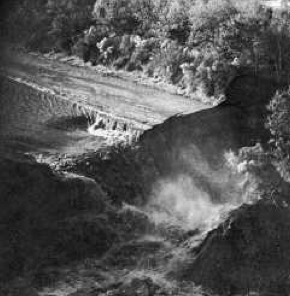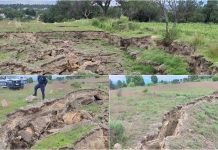The Lake Peigneur drilling disaster is unbelievable!
That catastrophic man-made event drained an entire lake, swallowed up eleven barges, many trees and 65 acres (260,000 m2) of land into a salt mine shaft, creating the biggest waterfall of Louisiana.

Lake Peigneur was a 10-foot (3 m) deep freshwater body situated in the US state of Louisiana between Delcambre and New Iberia until an unusual man-made disaster on November 20, 1980 changed its structure and the surrounding land.
Lake Peigneur actually sat above a labyrinth of salt caverns mined by the Diamond Crystal Salt Company.
On this November 20, 1980, a Texaco oil rig accidentally drilled into the mine under the lake.
The lake started rushing into the hole expanding its size while filling up the enormous caverns left by the removal of salt over the years.

The Texaco’s drilling platform, eleven barges, many trees and 65 acres (260,000 m2) of land were swallowed underground and underwater.
400-foot (120 m) geysers erupted up through the mineshafts.
A real apocalyptic event!
The backwards flow of the normally outflowing Delcambre Canal temporarily created the biggest waterfall in Louisiana at 164 feet (50 m), as the lake refilled with salt water from the Delcambre Canal and Vermilion Bay.
Meanwhile, the salt domes beneath Lake Peigneur are used as a storage and hub facility for pressurized natural gas.
Do you think it is safe to store gas under the lake and nearby drilling operations?
Anyway, the Lake Peigneur sinkhole drilling disaster changed the lake from freshwater to saltwater as the Delcambre Canal and Vermilion Bay are naturally salty or brackish. With a maximum depth of 200 feet (61 m), it is the deepest lake in Louisiana.














[…] Do you remember the Lake Peigneur disaster? […]
[…] Have you ever heard about the Lake Peigneur sinkhole disaster? […]